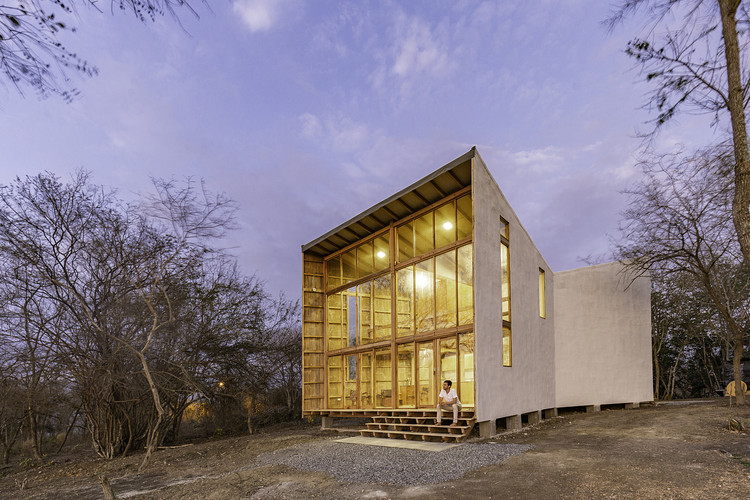Little Red Elisabeth Irwin Andrew Bartle Architects
2015-06-11 08:00
© Durston Saylor Photography
杜尔斯顿·赛勒摄影


架构师提供的文本描述。在这种自上而下的转变中,纽约市领先的进步私立学校之一小红伊丽莎白·欧文(LREI)将其规模扩大了一倍,为学生提供了更多的课程,并更新了它作为一个充满活力的21世纪学习中心的形象。
Text description provided by the architects. In this top-to-bottom transformation, Little Red Elisabeth Irwin (LREI), one of New York City’s leading progressive private schools, doubled its size to offer students a much greater range of programs and updated its image as a vibrant, 21st century center for learning.
© Durston Saylor Photography
杜尔斯顿·赛勒摄影


最初的1912年学校设施需要进行一次戏剧性的改革,以跟上教学和学习以及新技术的变化,并容纳预计的入学人数。很明显,学校必须采取大胆的步骤来维持自己的地位。
The original 1912 school facility needed a dramatic overhaul to keep pace with changes in teaching and learning, as well as new technology, and to house the projected enrollment. It became apparent that the school had to take bold steps to hold its own.
Floor Plan


这一翻新和22,000平方英尺的增加重新定位的LREI从一个内向的中心机构,以一个集中向外.由此产生的校园式环境,包括三个室外庭院,让学生们能够预见到大学生活中最重要的事情。它充满活力的室内空间促进了一种社区感,同时也为个人安静的时间和私人谈话提供了私人场所。
This renovation and 22,000-square-foot addition reoriented LREI from an inward centered institution to one focused outward. The resulting campus-like setting, which includes three outdoor courtyards, lets students anticipate the university life most will move on to. Its energized interior spaces promote a sense of community while also providing private places for individual quiet time and private conversations.
© Durston Saylor Photography
杜尔斯顿·赛勒摄影


由于LREI位于一个标有地标的地区,所有的变化都发生了,而没有改变建筑物的街道外观。作为一个单一项目,一旦经济在2008年陷入困境,这项工作将分四个阶段进行,并采用不同的融资和筹资战略。该项目呼吁社区参与、法律参与和环境研究,每一个阶段都对学校的学术日程造成最小的干扰。
Because LREI is in a landmarked district, all changes occurred without altering the buildings’ street facades. Intended as a single project, once the economy faltered in 2008 the work was spread over four phases with a different financing and fundraising strategy. The project called for community involvement, legal engagement and environmental study, and each phase happened with minimal disruption to the school’s academic calendar.
© Durston Saylor Photography
杜尔斯顿·赛勒摄影


该计划引入了分别致力于科学、艺术和人文学科的“展馆”。每个教室都提供了许多新的学习空间,包括传统教室、研究室、科学实验室、艺术工作室、3D艺术空间、媒体实验室和有额外私人练习室的音乐教室。还有一个学生休息室、改进的学生服务、一个扩大的礼堂和一个更大的自助餐厅。该项目引入了完整的ADA无障碍环境,并为主要大厅进行了整容,标志着学校入学时的新生身份。
The scheme introduced separate ‘pavilions’ devoted to science, the arts, and humanities. Each provide a host of new learning spaces including traditional classrooms, seminar rooms, science labs, an art studio, 3D art space, a media lab, and a music classroom with additional private practice rooms. There is also a student lounge, improved student services, an expanded auditorium and a larger cafeteria. The project introduced full ADA accessibility and provided a facelift for the main lobby, signaling the school’s revitalized identity upon entrance.
© Durston Saylor Photography
杜尔斯顿·赛勒摄影




































.jpg)

.jpg)



Architects Andrew Bartle Architects
Location 42 Charlton Street, New York, NY 10014, USA
Category Schools
Submitting Architect Andrew Bartle, AIA
ABA Studio Team Andrew Bartle, Sean Auyeung, Mark Barone, Karl Jensen, Joanne Graney, Ken Lake, John Thurman, Erin Ross
Area 22000.0 ft2
Project Year 2014
Photographs Durston Saylor Photography, Brad Farwell
























